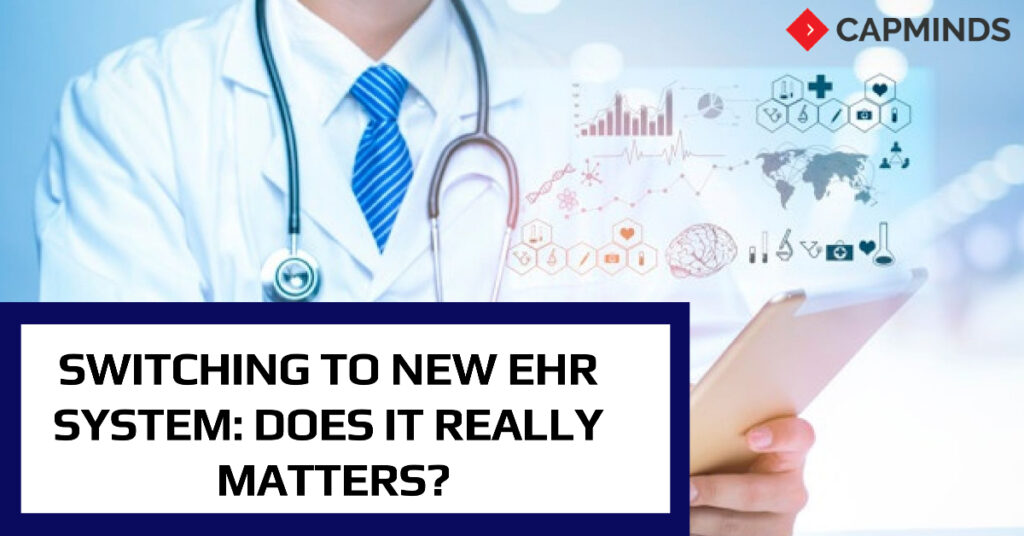Switching To New EHR System: Does It Really Matters?
To stay on the top in today’s healthcare marketplace, hospitals should always be up-to-date with the healthcare systems and software. The healthcare providers are always in the process of switching to new EHR systems. During this on-going global pandemic, the situation is going very critical day by day and the need for health interoperability with a versatile integration engine is more self-evident than ever before.
Why hospitals look for a new EHR solution?
According to the recent research by KLAS, it is found that nearly 50% of top healthcare providers replace or had plans to replace their EHR system.
The healthcare organisations are fed up with their current EHRs performance issues, outdated technologies, not so good user interfaces and that’s why they are looking for the new, updated EHR system with good performance and technological enhancements. Nowadays, physicians are becoming worried about they don’t have much time to spend with their patients as they spend more time inputting data into EHRs.
Based on the research from Annals of Internal Medicine, physicians now spend only 27% of their time interacting face to face with patients and nearly 50% of their time on their EHR.
The reason for switching to new EHR system may differ with the organisations. But these are the key considerations one should keep in mind when making the change.
3 key considerations for successful EHR Migration:
How will you choose a new EHR solution?
The first big decision that your organization has to make in the EHR migration process is selecting a new EHR system. And while you might be thrilled that you are finally getting rid of your old EHR, the grass isn’t always greener on other side. Due diligence and planning are required if you don’t want run into the same issues that you had with your previous EHR.
You need to think about your organization’s goals and find a solution that will help you achieve them. Is your primary goal meaningful use attestation? Is it to eliminate all paperwork? Improve quality of care? Enable your caregivers to access patient information more quickly? A combination of these things? Make a list of your primary and second objectives and incorporate them into your decision making process.
It is also important that you pick an EHR that will meet your future needs as well. You don’t want to be switching EHRs again in a few years because your organization’s needs have evolved beyond what your expensive new EHR is capable of. Pick a vendor who has a proven track record of keeping up with the evolving needs of healthcare organizations, and the ever-changing standards of the industry.
In addition to thinking about your organizational goals, you also need to ask for input from your end users when switching EHR systems. Not asking for opinions from the people who will be using the EHR daily is a critical mistake that many organizations make. If the majority of your physicians, nurses, and administrative staff are unhappy with the chosen EHR, they will be reluctant to use it. If this happens, you now have several major problems on your hands: unhappy workers, inefficient staff, and a very costly EHR that is hardly being used.
Thus, involving your end users in the decision making process early, and often, is an essential part of a successful EHR migration strategy. There is a bonus of doing this as well – your staff will be able to hit the ground running when the new EHR goes live because they are already familiar with the system.
How are you going to migrate data when switching EHR systems?
After you have found your ideal EHR solution, the next step is to map out a data migration plan. Migrating all of the data that is stored in your current EHR to your new EHR system is a huge undertaking. This means that you will need to put just as much time and thought into how you are going to migrate your data as you did with selecting a new EHR. When not handled properly, data migration can be a nightmare.
It can disrupt your business operations and delay the go-live date of your new EHR system by months. Most hospitals end up needing to run their data through both their old system and their new system for the duration of the migration, which can take up to two years.
Should you switch integration engines at the same time?
Switching EHR systems is a good time to review your current integration solution and ask yourself questions like: is your integration engine capable of meeting your current and future needs? Can your integration partner connect all of your medical devices and systems to your EHR? Are they able to solve your patient matching issues? You want to work with an integration partner who can offer a complete suite of solutions and work with you to accomplish every integration goal your organization has.
If your organization is going to change integration partners, now is the time to do it. Not only will some integration companies handle the entire data migration process for you, but they will also help you pick a new EHR solution and set up all of your interfaces. This will make the EHR migration entire process, which can often be complicated and stressful, simple and stress-free for everyone at your organization.
Embracing Transformation
The main goal of EHR is to provide the ability for physicians to easily analyze patient data to discover new treatments, uncover safety issues, and identify unusual clinical findings. The Health care delivery is in the early stages of an amazing change. This change is being driven by the relentless movement to the value-based care model and the problems exposed by the Covid-19 crisis. This ongoing transformation is paving the way for a new EHR design: a platform that fuses the current EHR with complementary systems, capabilities, and technologies.



